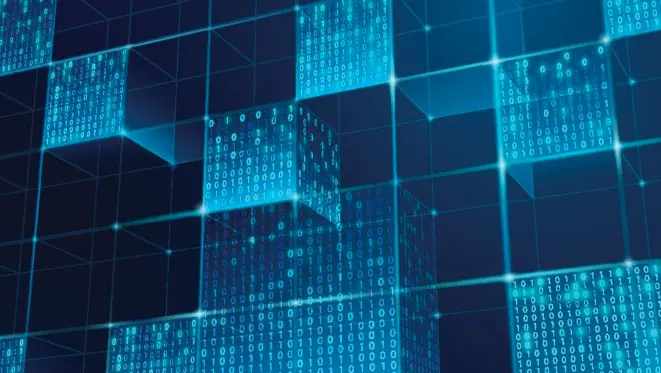By Daniel Keller, Forbes Councils Member
https://www.forbes.com/councils/forbestechcouncil/2025/08/27/depin-meets-ai-agents-building-a-self-running-digital-economy/
A new wave is reshaping how physical infrastructure and digital services interact. Decentralized physical infrastructure networks (DePINs) are connecting real-world assets through blockchain, while autonomous AI agents are taking over decision-making and coordination. When brought together, they can lay the groundwork for digital economies that can operate and adapt without human oversight.
Understanding What DePIN Is
DePIN refers to networks where individuals or organizations supply physical resources (e.g, wireless hotspots, energy devices or storage hardware) and receive tokens in return. The blockchain records every contribution and transaction, making the system transparent and verifiable. Smart contracts also automate the rules, so there’s no need for typical centralized authorities.
Projects like Helium show how DePINs can build robust, distributed networks. A centralized provider does not own these networks; instead, it relies on community participation, with incentives managed through tokens and automated protocols. But where do AI agents come in?
The Role Of AI Agents
AI agents are software programs that can analyze data, learn from patterns and make decisions on their own. In the context of DePIN, they handle tasks that would otherwise require human intervention. For example, an AI agent can monitor energy usage across a decentralized grid, predict demand spikes and adjust distribution accordingly. In a logistics network, agents can reroute shipments in real time to avoid delays or optimize storage allocation.
These agents interact directly with smart contracts and on-chain data. They can trigger maintenance, rebalance resources or even propose changes to network rules if they detect inefficiencies or security risks.
How DePIN And AI Agents Work Together
The convergence of AI agents and DePIN is more than a technological coincidence. If AI agents are to be truly autonomous, they need access to decentralized, programmable infrastructure for compute, storage, mobility and more.
DePIN provides the infrastructure and economic incentives while AI agents supply the intelligence and automation. When combined, these systems can coordinate logistics, energy or computing resources with minimal human input.
Let’s take a decentralized energy grid, for example. Community members install solar panels and batteries, then connect them to the network. The blockchain tracks each device’s output and distributes rewards. AI agents can come in to monitor weather forecasts, energy prices and local demand. If a storm is approaching, the agents can instruct batteries to store extra power. If prices spike, they can sell energy back to the grid at the optimal time.
In logistics, DePIN can connect independent couriers and warehouses. AI agents handle route planning, inventory management and real-time adjustments, all based on live data. Payments are settled automatically through smart contracts, reducing overhead and delays.
Technical And Economic Impact
The combination of DePIN and AI agents introduces new protocols and standards. The Modular Context Protocol (MCP) is one example, allowing AI agents to access decentralized compute resources on demand. Confidential computing and decentralized storage protect sensitive data, while token incentives keep participants engaged.
This model changes how value is created and distributed. Instead of relying on trust in a central provider, participants trust the code and the network. AI agents help maintain fairness and efficiency by adjusting rewards, detecting fraud and responding to network conditions.
Challenges And Limitations
Despite the potential, challenges remain. Technically, DePINs face scalability issues. Some blockchain networks can be slow and costly, limiting the speed of AI-driven transactions. AI agents also require significant computational power, which can strain decentralized systems. Solutions like layer-2 scaling aim to address this, but adoption is still evolving.
On the ethical side, decentralized AI raises concerns about accountability. If an AI agent makes a flawed decision, such as misrouting a delivery, it’s unclear who is responsible in a trustless system. Bias in AI algorithms could also cause inequalities, especially if training data lacks diversity. Regulatory uncertainty adds another layer of complexity. Governments are still grappling with how to regulate blockchain and AI, and conflicting laws could hinder global adoption of DePIN-AI systems.
Security is also a significant concern, as attackers can target both physical devices and digital protocols. Interoperability between different devices, networks and AI models is another technical hurdle. Governance remains a complex issue, since AI agents must reflect the interests of the community without becoming centralized themselves. Finally, data privacy is critical as well, especially when sensitive information is involved.
What’s Next?
Several projects are testing these ideas. Arkreen is building a decentralized energy network where AI agents manage device coordination and energy trading. In decentralized computing, protocols like Akash let AI agents allocate processing power across a distributed network of contributors.
The field is moving quickly. As standards improve and adoption grows, expect more industries to explore these models for everything from supply chains to public infrastructure.
The future of DePINs and AI agents is bright but requires innovation to overcome limitations. Advances in layer-2 solutions and sharding will likely make DePINs faster and cheaper, enabling AI agents to handle larger-scale tasks. Improved edge AI will further reduce latency, allowing real-time decisions in complex systems like autonomous vehicle networks. Over time, we could see a fully autonomous digital economy where AI agents manage global infrastructure logistics fleets, energy grids or compute marketplaces without human intervention.
This vision also holds promise for global inclusivity. In regions with limited access to centralized infrastructure, DePINs can provide resources like internet connectivity or computing power, while AI agents optimize their use. For example, a rural community could use a DePIN like Helium for decentralized Wi-Fi, with AI agents managing bandwidth allocation to prioritize critical tasks.
Conclusion
DePIN and AI agents are changing how physical and digital resources are organized. By combining decentralized ownership with autonomous coordination, they can offer a practical path to infrastructure that can run itself, adapt to new conditions and reward those who contribute. This approach is already being tested in sectors such as energy, networking and computing, and will likely expand in scope as the technology matures.
